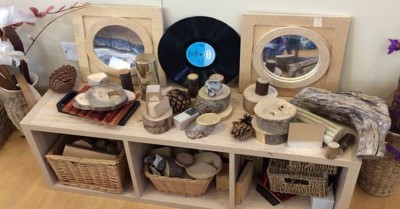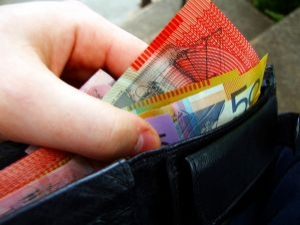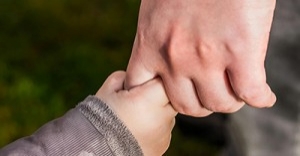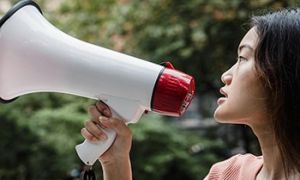Natural materials should be an integral element of children’s play. They are easily accessible and encourage children to learn about nature, foster creativity, imagination and discovery.
When using natural materials within the environment it enables children to be observant and to use all their senses. Children are engaged in decision making and problem-solving opportunities while playing with natural materials. Children become innovators, designers, explorers, artists and collaborators as they build, sort, design, manipulate, arrange and stack natural materials in a variety of different ways.
In the EYLF, early childhood pedagogy practice examines the role that good learning environments play in teaching.
‘Play spaces in natural environments include plants, trees edible gardens, sand, rocks, mud, water and other elements from nature. These spaces invite open ended interactions, spontaneity, risk taking, exploration, discovery and connection with nature. They foster an appreciation of the natural environment, develop environmental awareness and provide a platform for ongoing environmental education’.
Natural Materials In The Learning Environment
Natural materials are loose parts that can be combined, moved, lined up, taken apart and put back together again. The different textures, smells, sizes, colours, and sounds attributed to natural materials, make them ideal for sensory play.
The range of natural materials which can be included:
- Bark and Twigs from a variety of trees
- Leaves and Grass of different colours and shades,
- Flowers with interesting textures and scent
- Shells of varying shapes, sizes, patterns, textures and colours
- Fruits and vegetables that are interesting to look at and to handle
- Rocks of different colours, shapes, sizes;
- Pebbles and small smooth stones of different colours and shapes;
- Samples of sand in varied colours and graininess.
- Seeds of different sizes, shapes and colours
- Pods with seeds still in them
- Cones of different shapes and sizes
Practical Ideas With Natural Materials
- Create treasure baskets by adding large pine cone, a loofah, a large seed pod, shells and large polished stones for toddlers to explore.
- Make a collection of sand collected from a range of different places. Help the children to notice the variations in colour and texture and provide magnifiers so that they can look more closely at the grains that make up the sand.
- Encourage children to pay closer attention to shades of colours by using paint sample cards from a DIY store. Ask the children to chose a colour card and then go outside and see if they can find any natural objects that match the shades on the colour card.
- Add natural materials such as twigs, straw, pebbles and moss to your range of small world play resources. Encourage the children to create small environments for dinosaurs, farm animals, wild animals or small characters.
- Natural materials can be used very creatively to produce designs and collages. All that is required is a selection of natural materials and an area in which to produce the design. This could be a tray, a plain coloured table mat, a flat mirror, a large piece of white paper or a sheet spread out on the ground.
- Natural materials are perfect resources for use in heuristic play sessions when children are developing their creative and critical thinking skills. A selection of interesting cones, pods, dried whole fruits and wicker balls provides children with many opportunities to develop their conceptual understanding of big and little, same and different, long and short, few and many, heavy and light.
- Add a range of natural building resources such as large stones, shells, small branches, off-cuts of wood and pieces of bark to the brick and block sets in the construction area.

Using Natural Materials Safely and Responsibly
You will need to ensure that the natural materials you provide are safe to be used with children. Make sure you choose parts that are not too small to become choking hazards. Be particularly careful if the children are at an age where they are likely to put the natural resources in their mouths.
When assessing the safety of natural materials within the learning environment, ask:
- What is the object’s purpose?
- How old is the child/are the children who will be using it?
- Can the item be cleaned and disinfected?
- Regular health and safety inspections of natural materials should check for broken pieces, dirtiness, and visible wear and tear. If it doesn’t pass your safety test, then put it back. You can always collect more natural materials during your next natural-play experience.
- Children should also regularly wash their hands after collecting and playing with natural materials.
Combining natural materials with open-ended resources give children an opportunity to explore simple science and maths concepts such as classifying, counting and weighing.
References:
- Natural Materials, Petit Journey Australia
- Using Natural Materials Enhance Children's Learning, Optimus Education
- Nature Learning, Education Victoria



 As an Educator in Australia, your pay rate falls under the Children’s Services Award 2010. This award states the minimum amount that an employer can
As an Educator in Australia, your pay rate falls under the Children’s Services Award 2010. This award states the minimum amount that an employer can When working as a qualified Early Childhood Teacher (with a university degree) within a service, your rate of pay will come from the Educational Services
When working as a qualified Early Childhood Teacher (with a university degree) within a service, your rate of pay will come from the Educational Services When working as a Diploma Qualified Educator your pay rate is from the Children's Services Award 2010. This Award states your minimum rate of pay
When working as a Diploma Qualified Educator your pay rate is from the Children's Services Award 2010. This Award states your minimum rate of pay When working as a Cert 3 Qualified Educator, your pay rate is from the Children's Services Award 2010. This Award states your minimum rate of
When working as a Cert 3 Qualified Educator, your pay rate is from the Children's Services Award 2010. This Award states your minimum rate of Educational Leaders play a crucial role in their early childhood service by ensuring that the educational program aligns with best practices and supports the holistic
Educational Leaders play a crucial role in their early childhood service by ensuring that the educational program aligns with best practices and supports the holistic In early childhood education and care, ratios are more than a technicality—they are a frontline safeguard. Every child deserves responsive supervision, emotional connection, and developmental
In early childhood education and care, ratios are more than a technicality—they are a frontline safeguard. Every child deserves responsive supervision, emotional connection, and developmental With the new national child safety reforms kicking in on 1 September 2025, early childhood services like yours have a real opportunity to lead the
With the new national child safety reforms kicking in on 1 September 2025, early childhood services like yours have a real opportunity to lead the Here’s a comprehensive Mobile Phone and Smart Watch Policy tailored for early childhood education and care (ECEC) services in Australia, aligned with the latest 2025
Here’s a comprehensive Mobile Phone and Smart Watch Policy tailored for early childhood education and care (ECEC) services in Australia, aligned with the latest 2025 The Sea of Fish Challenge is a national initiative that invites children, educators, families, and communities to create and display fish artworks as a symbol
The Sea of Fish Challenge is a national initiative that invites children, educators, families, and communities to create and display fish artworks as a symbol Across the early childhood education and care sector, educators are sounding the alarm: current staffing ratios are insufficient to deliver safe, meaningful, and developmentally appropriate
Across the early childhood education and care sector, educators are sounding the alarm: current staffing ratios are insufficient to deliver safe, meaningful, and developmentally appropriate


